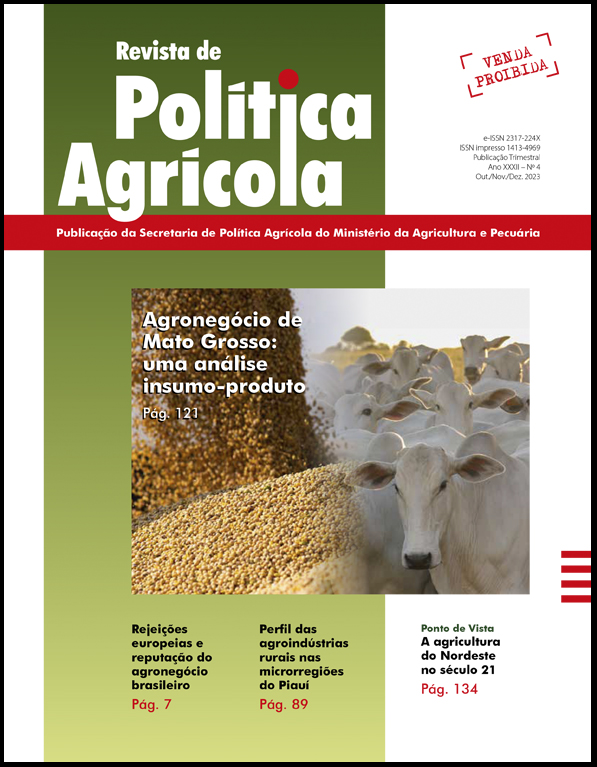Permanent crops in the Brazilian agricultural mesoregions
Keywords:
Agricultural area, Brazil, Spearman’s correlation coefficient.Abstract
Food production remains among the biggest challenges for humankind in this century, while Brazil is among the largest food-producing countries that remain with some land for economically or technically profitable farming expansion. Therefore, knowing which areas constitute the Brazilian agricultural frontier is crucial for improving public policies and logistics-infrastructure decisions. Data from the Brazilian Institute of Geography and Statistics from 1995 to 2020 were used in this study. We aimed to map and measure the expansion of agricultural areas for permanent crops in Brazil from 1995 to 2020 according to their mesoregions. We applied a three-stage methodology and identified similar mesoregions based on their share trends in the Brazilian agricultural-harvesting designated area. Some mesoregions must be highlighted in terms of the trend values for their shares of the Brazilian agriculturalharvesting designated area: Paraense Northeast, Minas´ South/Southwest, Triângulo Mineiro/Paranaíba Upstream, Paraense Southwest, Bauru, Woodland Zone, Rio-grandense Northeast, Pernambucano San Francisco, and Minas´ North. Other areas. such as the Espírito-santense North Coast, Bahia´s San Franciscan Valley, Cearense North, Cearense Northwest, Alagoano East, Minas´ West, and Paranaense Southeast, constituted a second-leading group. Policy implications are discussed and directions for further research are suggested, especially a top- down analysis targeting microregions or municipalities in the identified mesoregions.Downloads
Published
2024-05-07
How to Cite
Freitas, R. E. (2024). Permanent crops in the Brazilian agricultural mesoregions. Revista De Política Agrícola, 32(4), 55. Retrieved from https://rpa.sede.embrapa.br/RPA/article/view/1900
Issue
Section
Artigos Científicos


